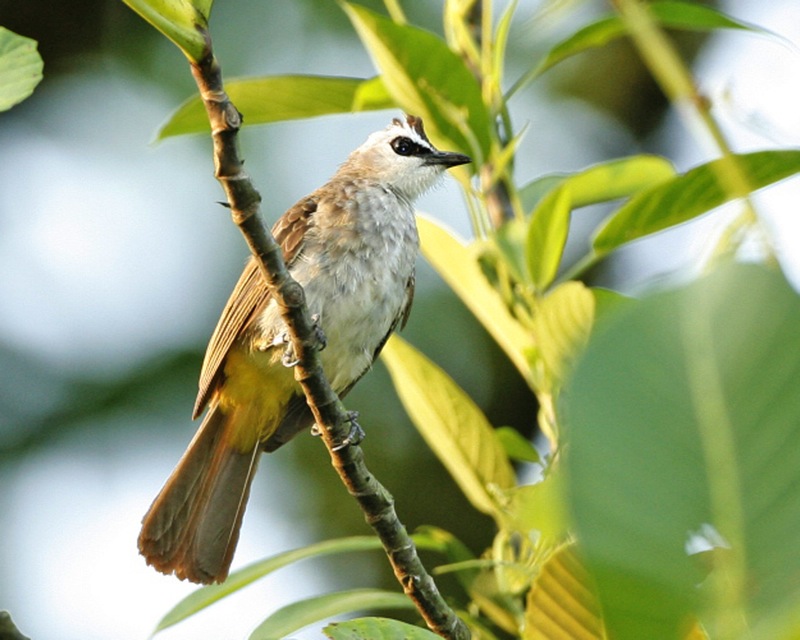Did you know there could be a dangerous predator on your balcony? Don’t panic though – it’s only dangerous if you’re an insect. We’re talking about the yellow-vented bulbul, a common local bird with a big appetite. It’s one of many amazing birds we might overlook in our balconies and gardens. But once you and your kids know a bit more about them, you’ll be fighting over the binoculars. Here’s the lowdown on some beaked wonders commonly seen around the city.
These small birds have a bright yellow belly, a deep blue throat and a curved black beak which they use to sip nectar from plants. At barely four inches long from beak tip to tail tip it’s easy to miss them, but if you notice a tiny shape among the tree branches or hovering at a flower, take a closer look. They’re well adapted to cities and you might even find them nesting on your balcony. If you’re lucky enough to get them there, look out for the bizarre sight of the baby waving its bottom at the parent as it flies to the nest. The parent will collect a white blob called a fecal sack containing the baby bird’s poop, and fly off to dispose of it.
Asian Openbill
If you turn your eyes to Bangkok’s skies you have a decent chance of seeing pterodactyl-like shapes drifting high above. These are most likely Asian openbill storks. They’re at the opposite end of the size spectrum to the sunbird, reaching a length of 81cm. They use their long beaks to catch water snails – one scientist found they could catch them even when blindfolded. We’re not sure what’s more surprising, the fact they can do this, or the idea of blindfolding a stork! Their snail hunting ways have helped saved them from extinction in Thailand. When rice-eating snails were introduced to and multiplying in the countryside, rice farmers encouraged storks to their land, which boosted their numbers. Here’s a fun activity for the kids – a step by step guide to drawing them.
Golden orioles are about the size of a blackbird. The males are a striking black and yellow colour. They are shy birds that like to hide in the foliage, and you might hear them before you see them – listen out for their whistling call. In certain countries like the UK breeding pairs are extinct, so it’s worth relishing them where they’re common. Although they normally feed on fruit, seeds and insects, sometimes they have been known to catch mice! They can live up to ten years and fly thousands of miles south to escape the harsh winters in the north – a long way for such a small bird.
At first glance these birds may look dull – they’re a pale brown colour with a whitish underside and a black strip across the eye. But look closer and they have a snazzy little Mohawk and a bright yellow bum. They are the bird you’re most likely to get nesting on your balcony as they like shady, sheltered spots and sometimes make use of hanging planters. Watching chicks grow is of course a brilliant way to get the kids interested in nature. Watch from a distance as parents won’t come near the nest to feed if they sense danger nearby, and don’t touch or disturb the family.
Happy watching!
Register your email address here and we’ll notify you when new articles get uploaded.














